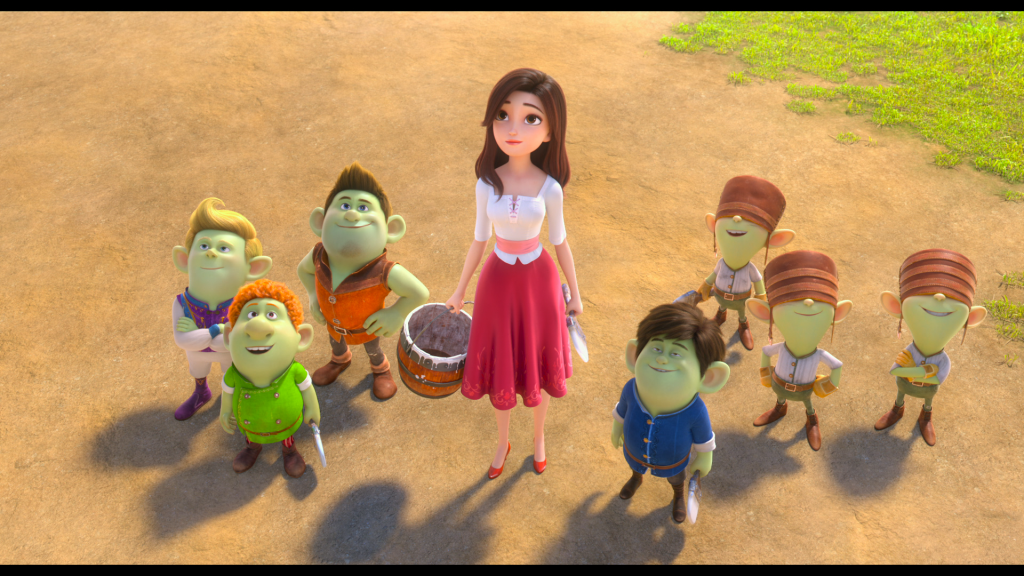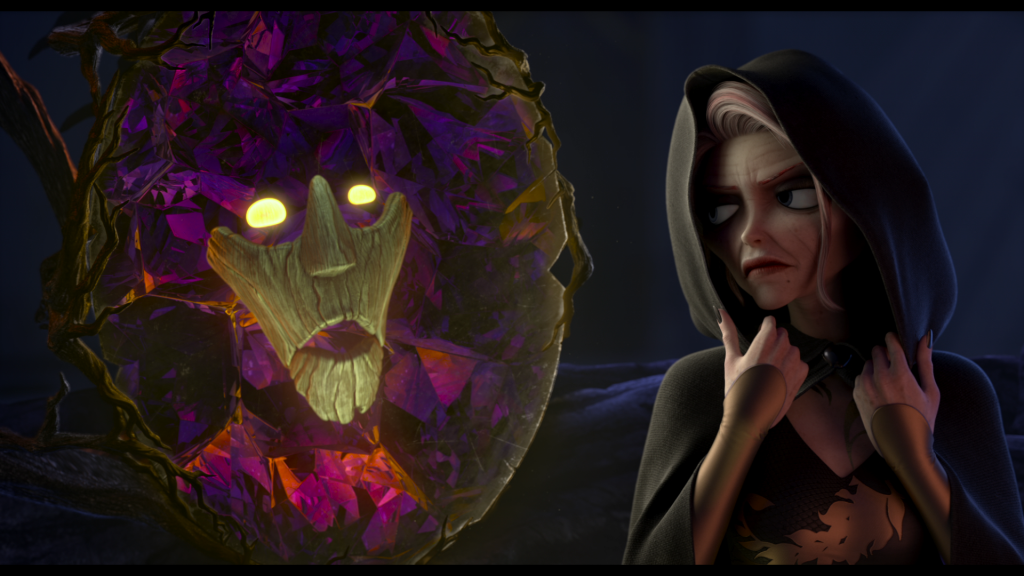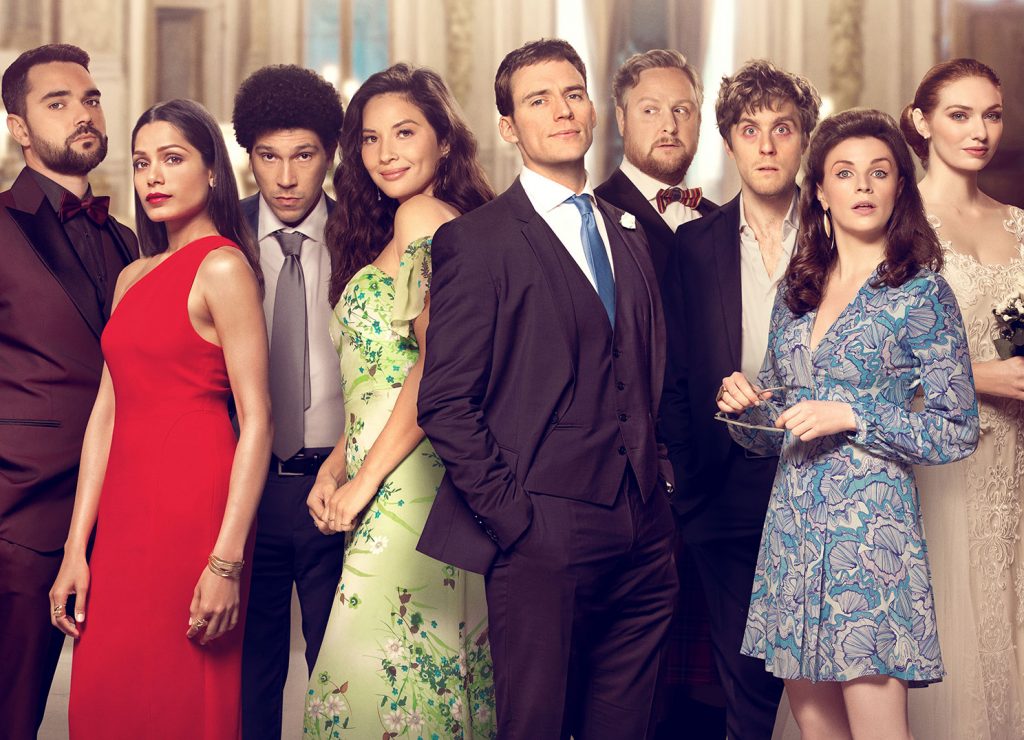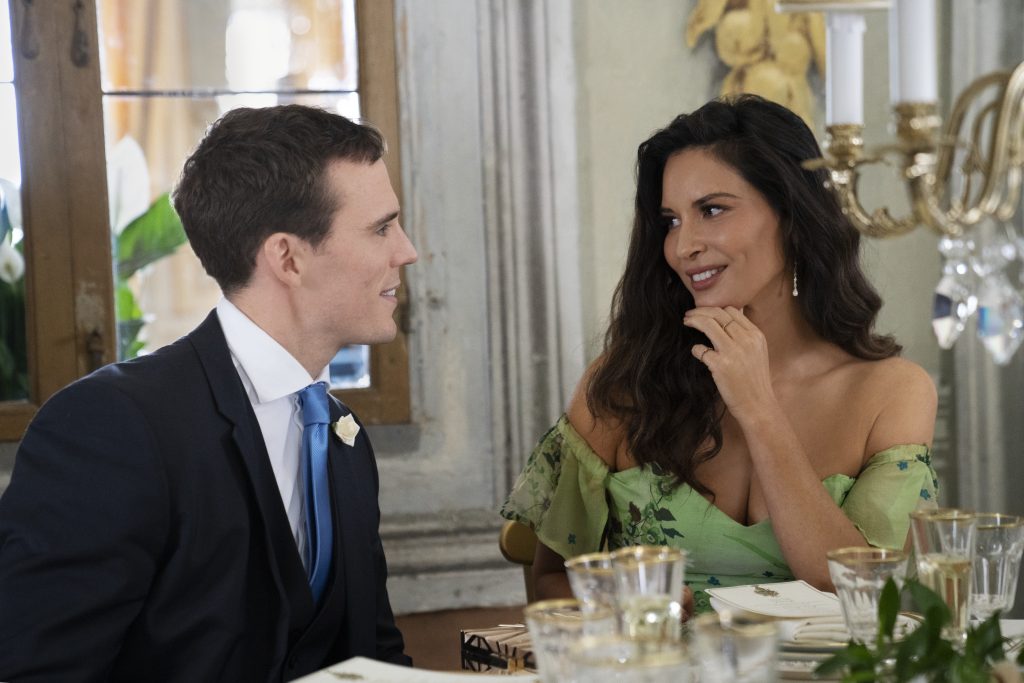January 17, 2021
by Carla Hay

Directed by Harry Bradbeer
Culture Representation: Taking place in England in 1884, the dramatic mystery thriller “Enola Holmes” features a predominantly white cast of characters (with a few black people and Asians) representing the working-class, middle-class, wealthy and criminal underground.
Culture Clash: Sherlock Holmes’ teenage sister Enola Holmes, who is determined to outsmart Sherlock and solve the mystery of their missing mother, ends up getting entangled in another mystery of a teenage lord who is the target of an assassination plot.
Culture Audience: “Enola Holmes” will appeal primarily to fans of Sherlock Holmes and the stars of this movie, as well as to people who are interested in a feminist-leaning perspective on mystery stories.

“Enola Holmes” vibrantly does justice to the mystery book series for which it is named, thanks to a splendid cast and a twist-filled, engaging adventure that will leave viewers wanting more “Enola Holmes” movies. There’s a lot to like about this cinematic adaption of the book “The Case of the Missing Marquess: An Enola Holmes Mystery,” written by Nancy Springer as part of the “Enola Holmes” mystery book series. The “Enola Holmes” movie (directed by Harry Bradbeer and written by Jack Thorne) offers a dashing and often socially conscious interpretation of what it would be like to be a female teenage sleuth in 1880s England while navigating a patriarchal society that constantly underestimates her or tries to undermine her.
In the movie, Enola Holmes (played Millie Bobby Brown, who is one of the producers of “Enola Holmes”) is trying to establish her identity as a detective, apart from her older brother Sherlock Holmes, who’s a famous detective. Enola has been raised by her eccentric, non-conformist widowed mother named Eudoria (played by Helena Bonham Carter, mostly in flashbacks), who has taught Enola not to let her gender prevent her from learning things that have been traditionally male-dominated, such as math, science and martial arts. Eudoria has been enthusiastically training and homeschooling Enola in these male-dominated fields.
The words “feminist” and “free-thinking” are never said in the movie, but it’s a life outlook that Eudoria is teaching Enola to have. The movie takes place in 1884 England, and by this particular society’s standards, Enola is considered a bit of a “wild child” because she’s not very interested in traditionally feminine things or looking prim and proper. For example, Enola often wears her long hair in a way that was considered very un-ladylike at the time: by letting her hair loose and without pinning it up or wearing a hat.
Throughout the movie, Enola talks directly to the audience, as if she’s letting viewers into her own private thoughts. It’s a creative decision that works well in the movie, for the most part, especially when it comes to showing Enola’s comedic sarcasm. However, there are times when this “breaking the fourth wall” technique gets a tad grating because it disrupts the flow of a scene and takes viewers, however briefly, out of the scene’s intended tone.
On Enola’s 16th birthday, Eudoria mysteriously disappears with no indication of where she has gone. Enola, who has a very close relationship with Eudoria, suspects that Eudoria has not been kidnapped. Eudoria was very private and liked to keep secrets. Enola is determined to find her mother and get to the truth.
But before she can start investigating, Enola (who is the youngest of three children) is horrified when she’s told that because of Eudoria’s disappearance, Enola now has to be in the custody of one of her older bachelor brothers: middle child Sherlock Holmes or eldest child Mycroft Holmes, who are both about twice the age of Enola. Sherlock and Mycroft left home when Enola was very young and never really visited. Therefore, she barely knows them.
In fact, Sherlock and Mycroft haven’t seen Enola since she was a prepubescent child. When she goes to meet Mycroft and Sherlock at the train station, they don’t even recognize Enola at first. In a private meeting that Mycroft and Sherlock had before reuniting with Enola, Mycroft (who is greedy, bossy and very snobbish) agreed to take custody of Enola because he has an ulterior motive: He wants possession of the house where Enola grew up, in case their mother has permanently vanished.
Sherlock (who is even-tempered, analytical and usually compassionate) is somewhat relieved that he won’t have the responsibility of taking care of Enola. His true love is his detective work, and taking care of a rebellious teenage sister doesn’t fit into his lifestyle. Mycroft doesn’t really want to have Enola live with him either, so he immediately makes plans to send her to a boarding school. The school is headed by an uptight middle-aged spinster named Miss Harrison (played by Fiona Shaw), who is infatuated with Mycroft and will do anything he asks her to do.
Mycroft makes it clear to Enola that he doesn’t respect Enola or the way that their mother raised Enola. It’s revealed later in the movie that Mycroft was cruel to their mother, which is one of the reasons why Eudoria didn’t seem to mind that she hadn’t seen him for years. Mycroft mentions the difficulty of finding a boarding school that won’t consider Enola a “complete failure.” Mycroft adds, “With Miss Harrison’s help, we’ll make [Enola] acceptable to society.”
Enola’s first meeting with Miss Harrison doesn’t go well at all. Enola defiantly tells her, “I don’t need to go to your ridiculous school!” In return, Miss Harrison slaps Enola in the face. Enola pleads with Sherlock to live with him, but he tells Enola that the matter is out of his hands because Mycroft is now the legal guardian of Enola.
Sherlock is Enola’s idol (she keeps newspaper clippings of all his cases), but she also feels competitive with Sherlock to solve the mystery of their mother’s disappearance before he does. Just like Sherlock, Enola is smarter than the average person, but she has more obstacles than Sherlock at being taken seriously because she has three strikes against her in this society: She’s female, she’s underage, and she’s a non-conformist.
In a flashback memory, Eudoria tells Enola: “There are two paths you can take, Enola: yours or the path others choose for you.” It’s a philosophy that Enola takes to heart. And more often than not, Enola trusts her own instincts, even if things don’t always work out the way that she planned. Luckily, Enola is a quick thinker who can come up with alternative solutions when she finds herself in a jam.
In a candid conversation, Sherlock tells Enola what she already suspected: There must be a very important reason for their mother’s disappearance, which seems to have been staged by Eudoria. Enola can’t solve the mystery while confined at a boarding school, so she runs away from home before she can be taken to the boarding school. Before she leaves, Enola finds some clues left by her mother that lead to a large stash of cash that Enola takes with her because it will come in handy during her investigation.
Enola disguises herself as a boy and sneaks onto a train. While in her private passenger car, Enola is surprised to find another runaway, who’s been hiding in a travel bag stowed in the car. He’s a boy around her age named Viscount Tewkesbury, the Marquis of Basilwhether (played by Louis Partridge), who has left home because he says his relatives are too controlling.
Enola immediately wants nothing to do with Tewkesbury, which means that later on in the movie he’ll become her love interest, in that “I like you but I’m going to pretend that I don’t” kind of way. She doesn’t have much time to kick him out of her train quarters because a sinister-looking man, whose name is later revealed to be Linthorn (played by Burn Gorman), has followed and ambushed Tewkesbury and tries to throw him out of the moving train. (And like a true villain in stories like this, Linthorn wears a derby/bowler hat.) Enola comes to the rescue of Linthorn and saves his life. The two teens jump off the train and immediately run away together, even though they don’t really know where they are.
During their time on the run, Enola and Tewkesbury get to know each other, and they find out that they have some things in common, besides not wanting to be under the control of bossy relatives. Enola and Tewkesbury both have fathers who have died. They both are resisting being “sent away” by relatives in restrictive environments. Enola doesn’t want to go to boarding school, while Tewkesbury doesn’t want to give in to his relatives’ demands that he enroll in the army. The two teens have also been following the news of about the Representation of the People Act 1884 (also known as the Third Reform Act), which proposes the expansion of voting rights to more citizens and which Parliament will decide on in an upcoming vote.
The beginning of a romantic spark between Enola and Tewkesbury is evident when Enola decides that Tewkesbury’s hair needs to be cut, so she cuts it for him. She acts as if she’s too independent to think about dating boys, but it’s easy to see that she’s growing fond of Tewkesbury and doesn’t want to admit it to him or to herself. Enola wants to solve the mystery of what happened to her mother, and she thinks dating someone would be too much of a distraction.
Tewkesbury and Enola eventually go their separate ways when Tewkesbury changes his mind about being a runaway and decides to go back home. He lives on a lavish estate with his widowed mother Lady Tewkesbury (played by Hattie Morahan); his paternal uncle Sir Whimbrel Tewkesbury (played by David Bamber); and his paternal grandmother called the Dowager (played by Frances de la Tour). Enola decides to move on and go to London. Even though Enola and Tewkesbury amicably part ways, it won’t be the last time they see each other in the story.
Enola has been declared a runaway, so she has to dodge the authorities. Mycroft has enlisted the help of a Scotland Yard inspector named Lestrade (played by Adeel Akhtar) to track down Enola. Mycroft feels angry, humiliated and insulted that his teenage sister was able to slip out of his custody. During her time on the run, Enola also comes across a female jiu jitsu class led by an instructor named Edith (who Susan Wokoma), who knows Eudoria and provides Enola with some valuable information, as well as a crash course in jiu jitsu.
Most of the charm of “Enola Holmes” can be credited to Brown and her spirited and charismatic performance of this intrepid sleuth. Enola is no shrinking violet, as she can get down and dirty in some fight scenes. However, the violence is tame enough that “Enola Holmes” can be considered a family-friendly film that adults and kids over the age of 7 can enjoy. The movie’s production design and costume design are on point, as are other technical elements such as cinematography, musical score and the stunt/action scenes.
“Enola Holmes” at times gets a little too heavy-handed with its feminist messages by making feminism look like it’s anti-men, based on some snide male-bashing comments that Enola makes in the movie. True feminism isn’t about being demeaning to men; it’s about believing in gender equality. Let’s hope that in future “Enola Holmes” movies (and you know there will be sequels), the filmmakers have Enola espouse more of the true gender equality spirit of feminism, because Enola doesn’t need to have a negative attitude toward men to be a good feminist.
There are enough twists and turns in the movie to please fans of mystery detective stories. Cavill’s Sherlock Holmes isn’t as intense as the character has been portrayed in other movies, but that’s because this Sherlock Holmes is at the beginning of his illustrious career. Claflin’s portrayal of Mycroft Holmes is fairly standard as a selfish villain, and it’s pretty obvious that Mycroft is a symbol for oppressive patriarchy. The supporting actors all do good jobs in rounding out this well-cast ensemble.
Overall, director Bradbeer keeps a brisk pace and infuses some modern-ish elements to the story (such as the female jiu jitsu class) to lighten up some of the stuffiness that would have dragged down this 123-minute movie if it strictly adhered to replicating everything about the real 1884 England. Purists can watch documentaries for that type of historical realism. “Enola Holmes” is what it is: good, fun escapism.
Netflix premiered “Enola Holmes” on September 23, 2020.




